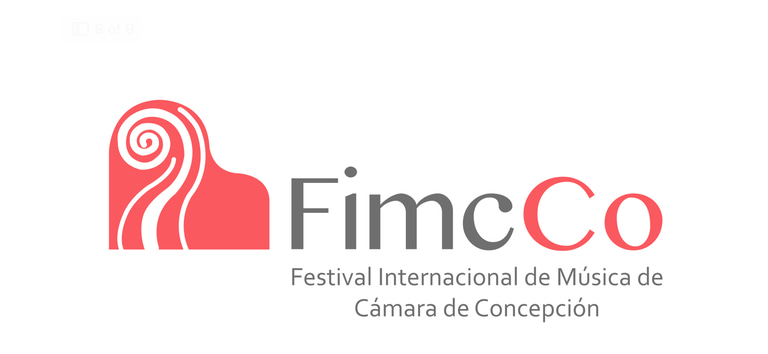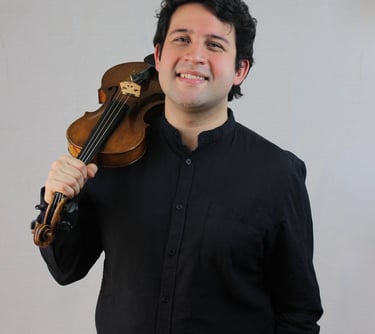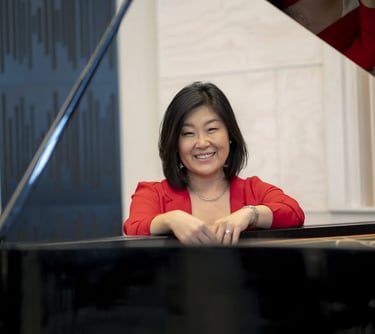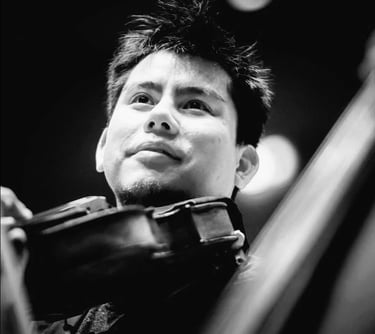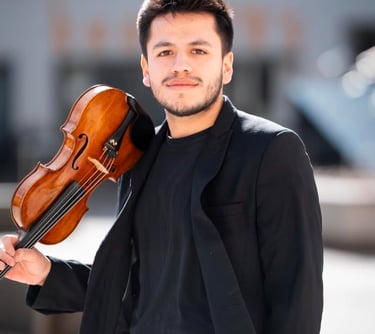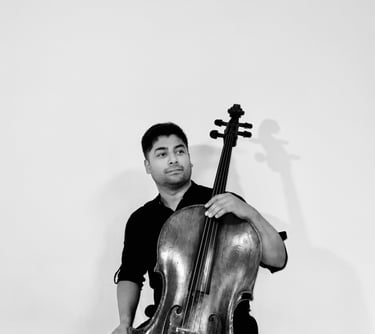Premiere - Elegy
Concert Program
Frank Bridge
Sonate for Violoncello and Piano H.125 **
I. Allegro ben Moderato
II. Adagio ma non troppo - Molto allegro e agitato
Rodrigo Herrera
Trío Elegíaco N°1 para Violin, Violoncello y Piano - Estreno Absoluto
I. Allegro energico
Pause
Robert Schumann
Piano Quintet in E- flat Major, Opus 44
I. Allegro brillante
II. In modo d'una Marcia - Un poco largamente
III. Scherzo - Molto Vivace
IV. Allegro ma non troppo
**Premiere in Chile
About the Program
"Premiere", the opening night of an opera is often referred to by this name. For us, this concept has an even more preponderant meaning as our Premiere represents the First Edition of the International Chamber Music Festival, the first concert of this Edition 2025 - Dimensions and the Absolute Premiere of the work by composer Rodrigo Herrera.
The concept of "Elegy" runs through this programme as a common thread, exploring the musical expression of mourning, memory and introspection. Frank Bridge's Sonata for cello and piano (1913-1917) is set in a world on the brink of the abyss: written in the years of the First World War, its mournful lyricism and rising drama reflect a profound lament. Its first movement, with its almost impressionistic resonances, contrasts with the restrained energy of the second, where anguish and resignation intertwine.
Robert Schumann's Piano Quintet in E flat major, op. 44 (1842) is a pioneering work of its kind, combining the orchestral power of the piano with the warmth of the strings. Conceived in a period of great creativity, the quintet alternates moments of exaltation and lyricism with passages of deep drama. Its third movement, a solemn Funeral March, introduces a grave and contemplative tone amidst the vitality that dominates the rest of the work. In this section Schumann's use of harmonic progressions evokes the inevitability of fate, with a processional rhythm suggesting the weight of loss. In its re-exposition, however, the march is transformed, hinting at an overcoming of grief within the emotional momentum that guides the work towards its energetic finale.
To this dialogue is added the Trio Elegiac (2003-2004), a work conceived in a single movement that condenses the structure of the traditional sonata into four interconnected sections. Two contrasting ideas - one rhythmic and the other melodic - are developed throughout the piece, alternating protagonism until they converge in a playful section that acts as a scherzo, where the instruments exchange memories of what has gone before. The music finally leads into a section of great agitation, closing the work with an energetic and definitive character. Inspired by personal memories and the historical context of the country at the time, the Trio Elegiacus is not only a tribute to the past, but also a reflection on the rupture and denouement of what is left behind.
From the romantic expression of Schumann, through the modern lament of Bridge to the introspection of the Elegiac Trio, these three works find in elegy a meeting point, transforming music into a space where mourning and memory become an artistic act.
